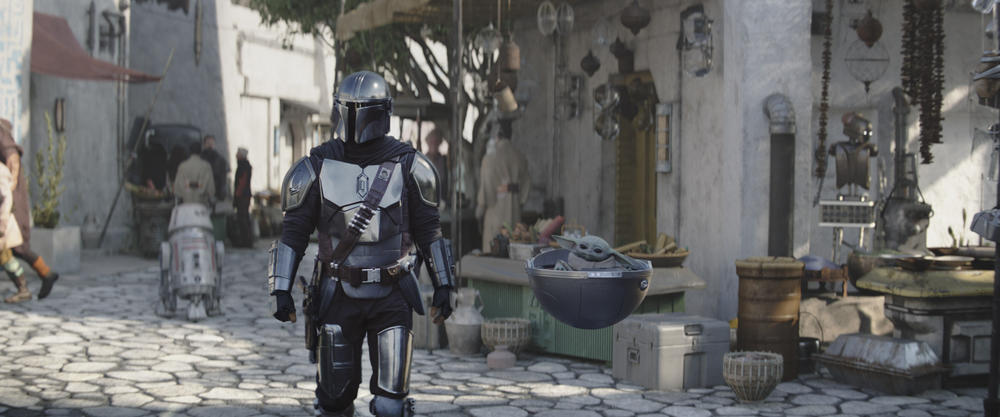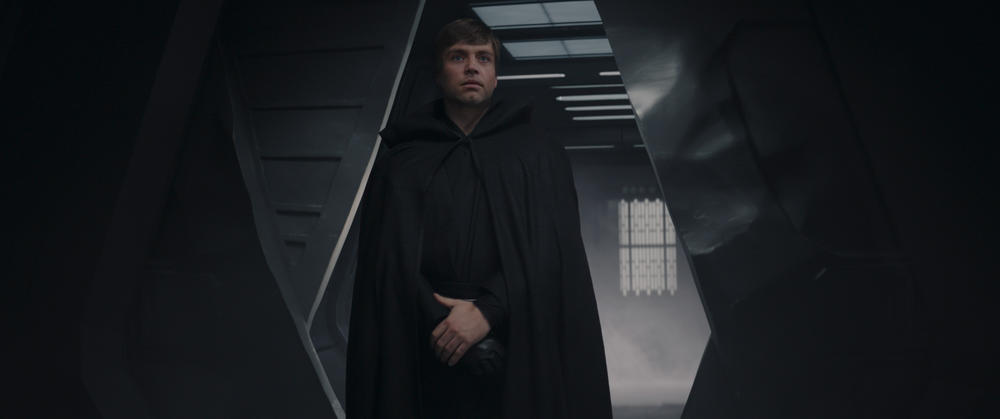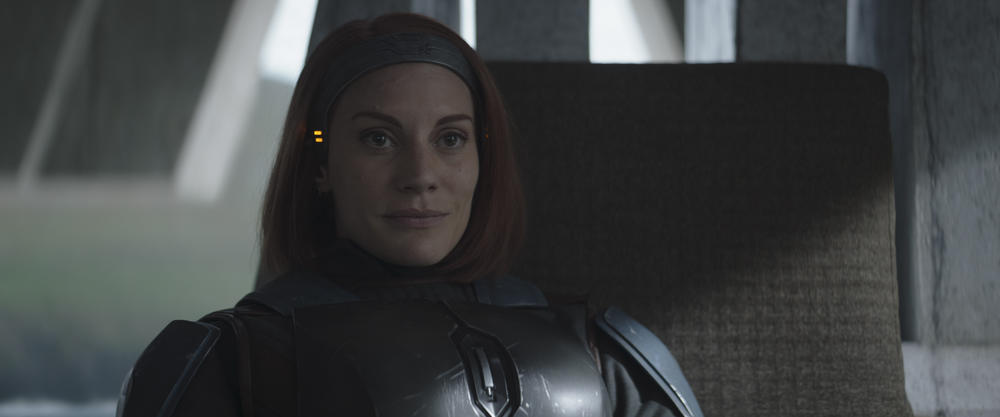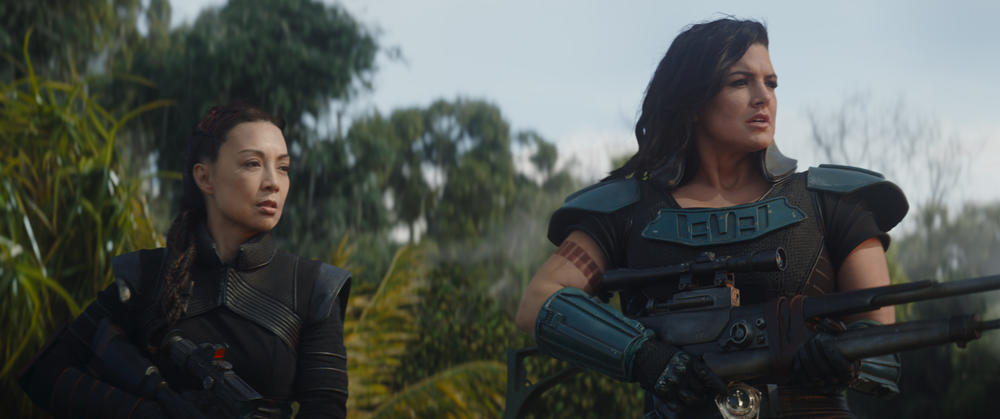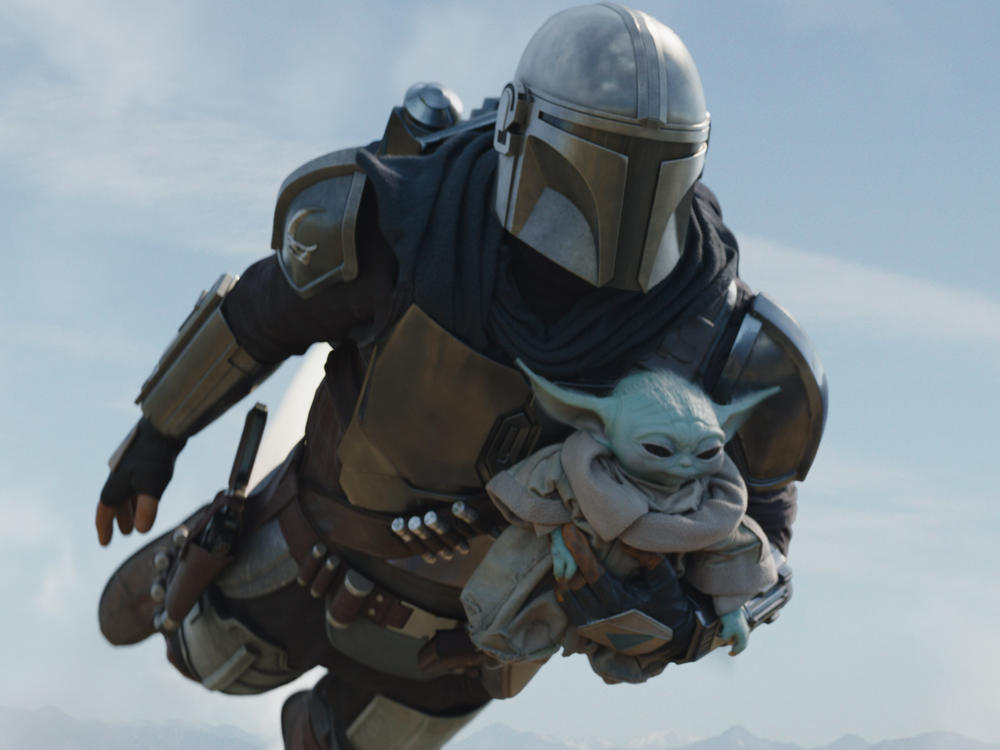Section Branding
Header Content
'Table setting' backstory burdens 'The Mandalorian' Season 3 debut
Primary Content
The Mandalorian now faces what may be the biggest challenge in its relatively short existence.
I'm not talking about Din Djarin, the helmet-wearing, magnetically terse super heroic bounty hunter played by Pedro Pascal, who gives the series its perfectly direct name. I mean the series itself, which provided an electrifying debut for Disney+ back in 2019 – along with an inspiring blueprint for how to re-invent the then-floundering Star Wars TV/movie universe.
As its third season starts, this show faces the real prospect of being eclipsed by a newer, fresher series, amid spreading fan fatigue.
It doesn't help that the first two new episodes from this season of The Mandalorian suffer seriously from a malady I call Table Setting Disease.
That's what happens when most of the energy in an episode is devoted to getting characters in place to tell the season's real story, while also giving the audience all the background info they need to understand what's going on.
And in this season of The Mandalorian, there is a lot of backstory which needs filling in.
'Mando' finds a new quest
As the first two episodes of the new season begin, Djarin is on a new quest: to atone for breaking the code of the Mandalorians by taking off his helmet and revealing his face to others. (This didn't happen just to show off Pascal's pretty face, though he did it more than once last season. Check out episode seven of the second season to see why Djarin had to break such a sacred Mandalorian rule in the first place. Or why he did it a different time.)
It turns out, Djarin was raised as part of a sect of Mandalorians whose customs and beliefs are far more strict than some others. More on that later.
But if your consumption of various Disney+ Star Wars series stopped with the last season of The Mandalorian, you might be a tad confused now. That's because important developments for this series happened on another Disney+ Star Wars story, The Book of Boba Fett.
The last season of The Mandalorian culminated in a moment Star Wars fans have dreamed about since this series was announced – a de-aged Mark Hamill appeared as his classic Star Wars character Luke Skywalker; a deadly Jedi Knight who tore through a villain's lair filled with robotic bad guys to rescue a young being the Mandalorian had been protecting.
This being, known as The Child, fans called Baby Yoda for his resemblance to the green-skinned Jedi master of the films.
As the second season finale concluded, The Child (whose name is Grogu) landed with a Jedi who can complete his training in The Force and Djarin fulfilled his quest to find a suitable home for his special young charge. Quest over, series done, right?
Not so fast. Over several episodes in the Boba Fett series, we see Grogu decide to return to the Mandalorian who had become a father figure to him. (As an aside, there's a serious problem with a spinoff series like Boba Fett, if its best episodes essentially feature another program hijacking the storyline.)
And in the first two episodes of The Mandalorian's new season, we see our pair reunited, with Djarin determined to visit the homeworld of Mandalore and bathe himself in "living waters" which will wash away his disgrace.
Finding a future in Mandalore's past
As we are shown in brief flashbacks in this new season, Mandalore was carpet bombed by the Empire, turning the world into a toxic heap of rubble. Djarin has to reconnect with old allies to get back there, including Carl Weathers' Greef Karga, now a wealthy, somewhat obsequious official; Amy Sedaris' weathered, deal-making mechanic Peli Motto and Katee Sackhoff's descendant of Mandalore's royal family, Bo-Katan Kryze.
You can practically feel the series' storytelling machinery ponderously cranking into gear through each of these visits. The stopover with Karga allows him to update Djarin – and the audience – on two important characters, Giancarlo Esposito's villainous Moff Gideon and rebel fighter-turned-mercenary Cara Dune, played by Gina Carano, who was fired from the series in 2021 after publishing controversial social media posts.
(Gideon was sent off to a war tribunal and Dune joined the New Republic's special forces. Gideon is expected to return, but it's unclear what will happen to Dune or whether Carano will play her if the character comes back.)
A trip to Motto's garage leaves Djarin saddled with a droid that acts an awful lot like the classic Star Wars character R2-D2. And Bo-Katan winds up joining Djarin in action, showing off her skills with the mysterious dark lightsaber he took from Moff Gideon last season and still struggles to wield himself.
In each episode, long bouts of exposition explaining who is where or what has to be done are split up with frenetic, expertly shot action sequences, as if the jolt of battle will cause audiences to forget they just spent long minutes learning a bunch of backstory like they signed up for a Star Wars-themed version of Masterclass.
What I loved here, was the deepening bond between Grogu/Baby Yoda and the Mandalorian/Djarin. Here, we are reminded that the Mandalorian's way is a creed that many can adopt — Bo-Katan, in fact, is quite annoyed by the extremist customs of the sect which raised Djarin, known as the Children of the Watch — as the former bounty hunter explains the history and ways of his chosen people to his chosen son in several telling moments.
But one of my prescriptions for great TV is simple: Show, don't tell. And there are way too many moments where The Mandalorian has a character telling audiences something it would have been more exciting to show us, making these first two new episodes feel something like the opening setup of a new video game.
This creative lull is particularly a problem for The Mandalorian because another Disney+ series set in the Star Wars universe, Andor, landed on many critics' Top 10 lists last year and galvanized fans by offering yet another take on how to move the franchise forward.
As a kind of prequel to the film Rogue One, Andor is centered on the story of how the rebel alliance rose to oppose the brutally authoritarian Empire, telling a Star Wars story rooted in the history of Diego Luna's scrappy fighter Cassian Andor. And it avoided many of the pitfalls derailing other Star Wars offshoots by grounding its story in surprising ways.
No Jedi Knights. No lightsabers. No mysticism. Nobody uses The Force to get out of a jam. Just hardscrabble, average people willing to risk everything to push back against a punishingly bureaucratic regime.
So far, this season of The Mandalorian, packed tight with stories of kingdoms past and challenges to come — setting up a quest which feels decidedly less important than the show's original motivating mission – seems off to a less than compelling start, in comparison.
But this Star Wars fan remains hopeful. Because it's often a mistake to judge a video game on the first five minutes of play.
Copyright 2023 NPR. To see more, visit https://www.npr.org.
